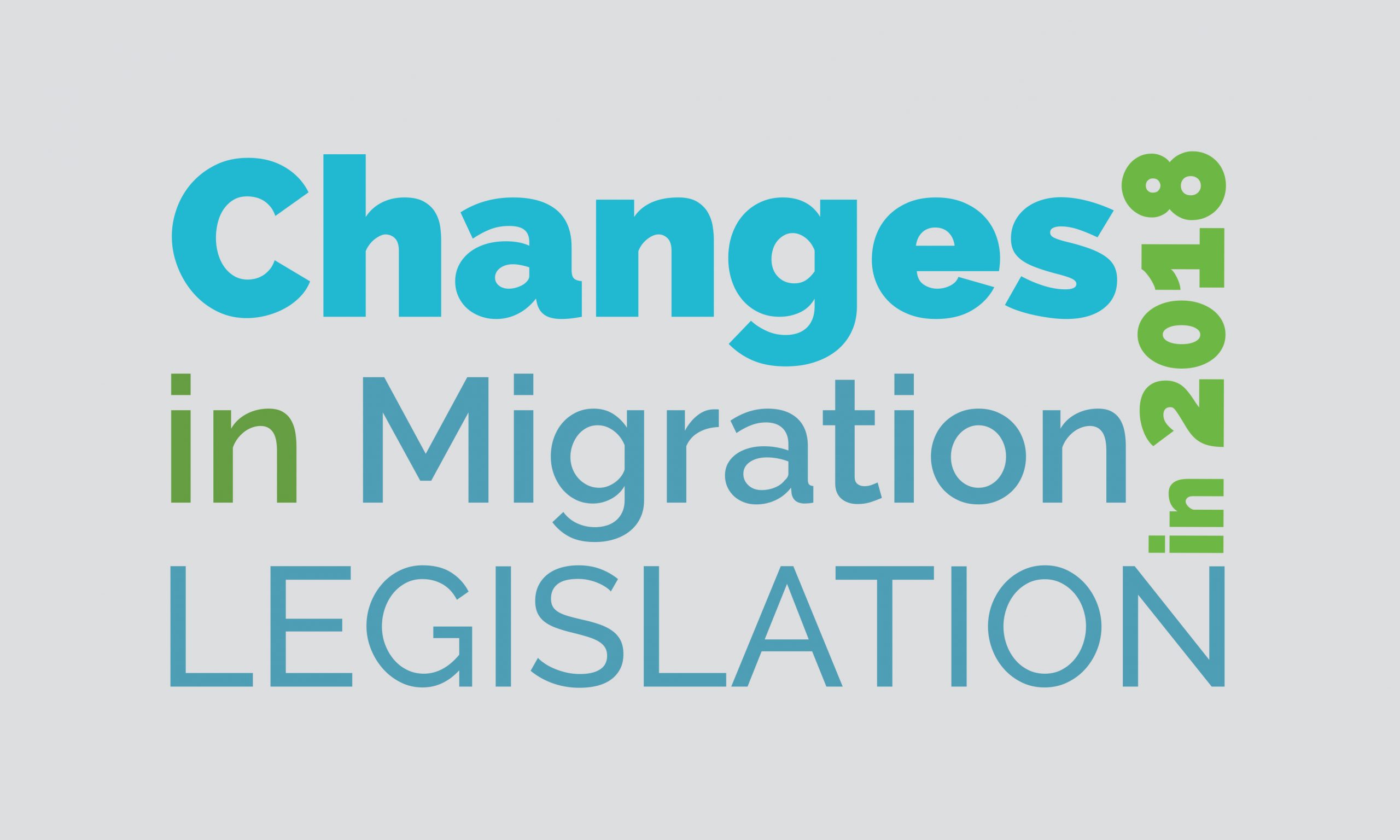Recap of the most important changes:
1st March 2018:
A lot of the changes announced by the Australian government in 2017, with relation to Employer Visas, have been implemented on the 1st March 2018:
– Maximum Age is now 45 years:
Applicants must be under 45 when applying for a Subclass 186 ENS or a 187 RSMS Permanent Visas.
– Occupation Lists:
The 186 ENS Visa is now only available to applicants whose occupations are on the Medium and Long-term Strategic Skills List (MLTSSL) , for the Direct Entry and the Termporary Residence Transition (TRT) Streams.
– Time for application of a Temporary Residence Transition Stream (TRT) visa:
Applicants now need to work for the same employer, in the same position, for at least 3 years before applying. Until March people only needed to work for 2 years before they could apply.
IMPORTANT:
There are transitional arrangements in place to people who held, or had applied for, a 457 visa on or before 18 April 2017. When applying for a 186 via TRT they are not bound by any occupation lists and they can apply right after 2 years.
Be careful though and seek professional assistance when trying to find out if as the transitional arrangements apply to you. We have seen people who thought they couldn’t apply for a permanent visa anymore, when they actually could under the Transitional Arrangements.
– RSMS 187:
The Regional Employer visa has a new occupation list, the ROL and this vis now requires applicants to demonstrate they have at least 3 years of full time work experience (or part-time equivalent) in the same role being offered.
18 March 2018:
After announcing the abolition of the 457 visa in 2017, on the 18th March 2018 the 457 was finally abolished and replaced by the TSS 482 visa.
Despite the announcement in 2017 that the 457 visa would cease to exist in March 2018, it did not happen on the 1st March, as many people had thought and the visa was replaced only on the 18th March.
After having been created in 1996, the 457 visa program became one of the most successful visa programs in the history of Australia, in the sense that it allowed Australian employers to hire overseas talent via a visa that was processed fast and had reasonable requirements to be met.
In recent years however, many employers abused the system and many visa holders as well, leading the government to abolish the program and replace the visa with the Subclass 482 TSS Visa.
Maybe it would have been more effective to increase monitoring and weed out the employers abusing the system instead of abolishing the visa altogether, but so far the TSS visa is working well and it has been processed much quicker than the 457 had been in the last years.
The new TSS 482 visa is very similar to the 457 and will still provide employers with access to foreign workers, but there are several differences in requirements:
- All applicants, regardless of occupation, must show evidence of a minimum 2 years recent full time work experience in a role similar to the one being offered. This is on top of requirements for minimum qualifications but not on top of any work experience being used in lieu of work experience
- Employers must advertise occupation following strict guidelines set out by the department of immigration in relation to where the job ads can be posted and their content. This is called Labour Market Testing and it was a requirement for just some occupations. With the TSS visa it is now a requirement for all occupations. Employers must demonstrate that they have tried to find an Australian citizen or resident for the job before they offer it to a foreigner
- The visa has 2 streams as the 457 had had since the changes in April 2017:
- The Short Term Stream: visas are granted for 2 years only and the holder may extend their stay for another 2 years by applying for a further TSS visa onshore. This stream is for people whose occupations are on the Short-Term Skilled Occupation List (STSOL) and this stream does not lead to an application for a Permanent Employer Visa.
- The Medium and Long Term Stream: visas are granted for 4 years and after 3 years working for the same employer in the same occupation the holder may apply for a Permanent Employer Visa if their occupation at that stage remains in the Medium and Long Term Skills Shortage List (MLTSSL).
* Don’t forget that Transitional Arrangements may apply to some people.
01 July 2018:
– Minimum pass mark for the Points Test required for General Skilled Migration visas increases to 65 points (from previous 60 points). This affects the following visas:
* Subclass 189 Skilled Permanent Independent Visa
* Subclass 190 Skilled Permanent State-Nomination Visa
* Subclass 489 Skilled Provisional Regional Sponsored Visa
12 August 2018:
- The long-awaited Skilling Australians Fund finally comes into effect after having received the royal assent back in May. Employers seeking to sponsor workers on the temporary TSS 482 visas, or employers nominating workers for permanent Employer Nomination Visas 186 and even regional employers sponsoring permanent workers on the RSMS 187 permanent visa are not required to meet the previous training benchmarks anymore. These employers are now required to pay a levy to this fund at the time of applying for the nomination of the employee.
- Payment varies according to the turnover of the business sponsoring or nominating the employee and to the type of visa:
– TSS Visas:
* employers turning over more than $10 million a year must pay $1800 per year of proposed visa in full at the time of the application. So an employer sponsoring an employee for 4 years will have to pay $7,200.00
* employers turning over less than $10 million a year must pay $1200 per year of proposed visa in full at the time of the application. So an employer sponsoring an employee for 2 years for example will have to pay $2400.00
– ENS and RSMS Visas:
Requires a one-off payment of $3,000 or $5,000 depending on the business’ turnover, again if it is under or over $10 million respectively
- The Labour Market Testing requirement changes again: instead of 21 days, job ads must be live for 28 days before an employer can offer the job to a foreign worker and lodge a nomination for a TSS Visa
September 2018:
Western Australia, after having considerably reduced their support to skilled migration in recent years (by shrinking the size of their occupation list and keeping only a few health professions there, as well as by removing Perth from the RSMS program), announces that there will be a new pathway for professionals seeking a State Nominated or Sponsored Visa in the General Skilled Migration Program.
The new pathway will be offered to Graduates of Western Australian Universities.
Minimum time of study is 2 years and applicants still need to meet all the other requirements of the visa they are applying for such as Skills Assessment in the occupation nominated and points test.
The list is quite generous with some occupations only available to Master Degree or PhD graduates, but with several available to Bachelor Degree graduates too.
Working Holiday Maker Program
The government also announced changes to the Working Holiday Visa program in the lines of:
- Passport holders from Canada and Ireland can now apply for a Working Holiday Visa Subclass 417 until they are 35 years of age – coming from the old maximum age of 30. Passport holders from other countries continue to be able to apply only until they are 30.
– There is now an option of a third year for Working Holiday Maker (subclass 417) visa holders who, after 1 July 2019, undertake 6-months of specified work in a specified regional area during their second year of stay
– Working Holiday makers will now be able to work with the same agricultural employer for 12 months (instead of 6 months)
– The maximum number of visas available for grant under the Work and Holiday Visa Subclass 462 will be increased
– Work and Holiday Visa Subclass 462 holders will be able to work in more areas undertaking regional plant and animal cultivation work to be able to apply for a Second Year Visa.
Political Shuffling
Peter Dutton resigned from the Immigration Portfolio after taking part in the manouvers to remove Malcolm Turnbull from the post of Prime Minister.
The Prime Minister is now Scott Morrison and the Immigration Minister is David Coleman.
Despite of all this happening, and the Prime Minister saying on television it’s time to cut down migration numbers (his exact words were “Enough, enough, enough”), invitation numbers under the SkillSelect increased with the new Financial Year since July.
Last financial year saw around 600 invitations per month for the Subclass 189 Skilled Permanent Independent Visa and 489 Provisional Regional Sponsored Visa, but we have started with 1000 in July and 2500 every month since.
The government also decided that there would only be one round of invitations now and that would be every 11th of the month.
Update on the Temporary Parent Visa
The government announced in November that the Temporary Sponsored Parent Visa will be introduced in the first half of 2019 – they had previously said that the visa would be introduced in November 2017.
This visa has been anxiously awaited by permanent residents and citizens alike whose parents live overseas. The visa will allow parents to visit their families in Australia for a continuous period of up to five years. The cost is higher than a regular tourist visa but way cheaper than a Contributory Parent Visa, and may fit the needs of some people.
Please keep checking our blog and Facebook page for updates when this visa is formally released.
Erica Carneiro
Co-Founder, Director and Registered Migration Agent 0532487



